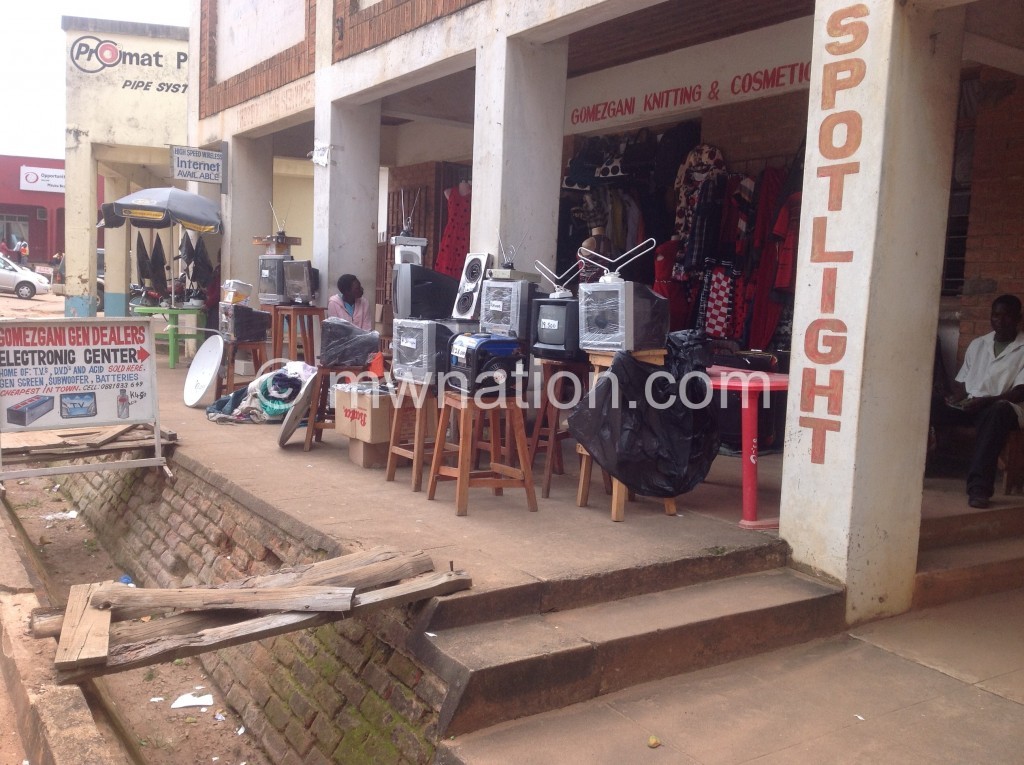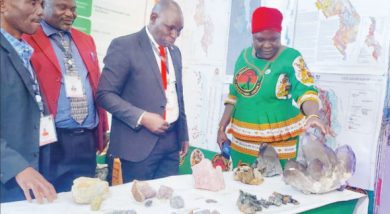Business News
Malawi embraces digital migration

A chat with Nyirenda reveals an information gap on digital migration.
Nyirenda says he only heard about digital migration last month on a radio programme.
“I import analogue antennas from South Africa and sell them in Mzuzu,” he narrates.
He says he sells about seven or more antennas a day at a price of K2 500.
“Though I know that they will phase out in a month’s time, I let my customers buy them; I cannot stop them. I know most of them are ignorant about digital migration, that’s why they are still buying them,” he says.
Nyirenda says it is not his fault that his customers are not aware of the switch, but government should scale up awareness campaign on the matter.
“I still have them in stock, and if I tell people that they will soon phase out, then they won’t buy and I will lose out,” he says.
While talking to Nyirenda, two prospective analogue antenna customers walk into the shop.
Jackal Ngwira who comes from Engucwini in Mzimba says he does not have any knowledge on the migration from analog to digital broadcasting.
“What is that? Can you please explain because I am blank on that,” Ngwira asks.
While his friend James Gondwe says he once heard about it on radio, but does not understand a thing about it.
“I really want to buy a television set and this antenna,” he says.
Need for awareness campaign
National Digital Broadcasting coordinator Denis Chirwa says his office is aware of electronic shops selling the analogue television antennas although they have had meetings requesting shop owners to stop selling them.
Chirwa states that there is need to intensify consumer awareness campaign for the masses to be knowledgeable on the matter and access the right gadgets.
“Consumers have to know what to do and not to do to avoid being ripped off by buying antennas that will phase out in a month’s time; we are calling upon all electronic shop owners to familiarise themselves with the new technology in place now,” he explains.
He says importation of analogue TV antennas should not be done to avoid e-waste and making Malawi a dumping place.
“Come June 17, we will start imposing a law banning the importation of these items,” he narrates.
He says his company has procured enough set top boxes decoders to feed the consumers selling at K20 000 with 12 channels in post offices.
Currently, 25 000 Malawi Digital Broadcasting Network (MDBN) decoders have been sold.
However, 150 000 families have television sets in the country.
Government admits awareness campaign flop
Minister of Information, Tourism and Culture Kondwani Nankhumwa has, however, owned up to government’s failure in the whole sensitisation campaign.
“The truth of the matter is that we started the awareness campaign late; it was supposed to be launched two years ago; when I joined the ministry, there were issues to do with the procurement of top boxes decoders which caused the delay,” reveals Nankhumwa.
He says government rolled out the sensitisation campaign on March 10, three months before the June 17 deadline.
The Information Minister says MDBN has so far been organising roadshows in trading centres sensitising the masses on the migration.
“People will have information by the end of this month as we have partnered with other organisations like Consumers Association of Malawi (Cama) in sensitising the consumers.
On the other hand, Cama chief executive officer John Kapito does not have kind words on how government has handled the sensitisation campaign.
“There has been very little awareness to educate people on digital migration; there is need for a serious campaign,” Kapito says.
He says his organisation lambasted government a few months ago on the same.
Kapito says government was supposed to ban the imports of these analogue antennas.
“But as usual it takes time for them to realise that consumers are being exploited,” he says.
The role of other players
On January 18, 2013, Gotv, a MultiChoice Africa budget Digital Terrestrial Television(DTT) package, extended broadcasting in the country with its signal accessible in Blantyre, Lilongwe and Mzuzu cities.
However, with a radius of 60 kilometre, MultiChoice’s Gotv still leaves out the rural masses that make up a large percentage of the population.
“We are only supporting and complementing government’s efforts in digital migration, the rural masses can use MBDN decoders,” says Chimwemwe Nyirenda, MultiChoice Malawi’s sales and marketing manager.
Nyirenda cited a recent Gotv price cut from K34 000 to K16 999 as one way of ensuring a smooth transition.
He, however, stresses that the most important thing is for the masses to have information on analogue and digital technologies.
The company has currently spent K3.2 billion on four towers constructed in three major cities of Blantyre, Lilongwe and Mzuzu to contribute to the country’s digital migration.
A talk with the coordinator of digital migration, Chirwa reveals that a total of 75 000 Gotv and MDBN decoders have been sold.
About digital migration
Digital migration is the process of moving from analogue to digital broadcasting using digital technology.
Countries world over are migrating from analogue to digital television broadcasting following a resolution of the International Telecommunications Union(ITU) that member States should migrate from analogue to digital broadcasting by June 17 2015.
The agreement to switch from analogue to digital broadcasting was made in 2006 at the Geneva conference.
It is, therefore, mandatory for all countries including Malawi to migrate from analogue to DTT broadcasting technology.
However, the Southern Africa Development Community (Sadc) designated December 31, 2013 for its member States, Malawi inclusive, to start providing digital television services to its citizens.
What to expect after the digital migration
When compared to analogue television, it is believed that the migration will offer more efficient transmission that allows television stations broadcast improved picture and sound quality with less interference than the analogue.
It will also offer more programming options for consumers through multiple broadcast channels and freed up frequencies will be used for other ICT services.
With DTT a single frequency can carry up to 20 digital channels using the same amount of frequency that would only carry one analogue channel and a weaker digital signal is much better than a weak analogue signal.
All in all, how much do Malawians know about digital migration? Will it come as a shocker to many and find them not ready to embrace it? Is the switch going to hit upon some viewers as a thief in the middle of the night like the day of the Lord?





